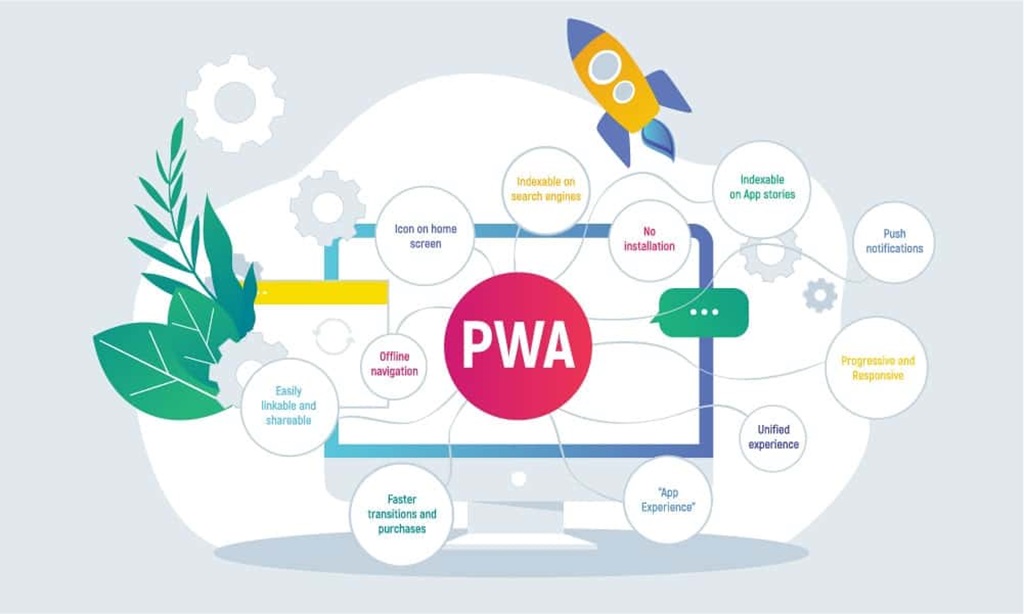In the ever-evolving landscape of web development, Progressive Web Apps (PWAs) have emerged as a groundbreaking technology, blurring the lines between web and mobile applications. But how exactly do PWAs differ from regular web apps, and why should developers and users alike take notice? In this comprehensive guide, we’ll delve into the intricacies of PWAs, exploring their unique features, advantages, and potential impact on the future of the web.
Understanding the Basics: Web Apps vs. PWAs
Before we dive into the specifics, let’s establish a clear understanding of the fundamental differences between traditional web apps and PWAs.
Traditional Web Apps:
- Access: Primarily accessed through web browsers.
- Functionality: Limited offline capabilities and device integration.
- User Experience: Can be less responsive and engaging compared to native apps.
- Installation: Not typically installable on devices.
Progressive Web Apps (PWAs):
- Access: Accessible through browsers but can also be installed on devices.
- Functionality: Enhanced offline capabilities, push notifications, and device features (camera, GPS, etc.).
- User Experience: Deliver a more app-like experience with smooth interactions and faster loading times.
- Installation: Installable on devices’ home screens, behaving like native apps.
The Key Differentiators: What Sets PWAs Apart
- App-Like Experience: PWAs leverage modern web technologies to deliver an experience that closely resembles native mobile applications. This includes smooth animations, responsive design, and the ability to work offline or in low-connectivity environments.
- Offline Functionality: Unlike traditional web apps that require a constant internet connection, PWAs can cache data and assets, allowing users to access content even when offline. This is achieved through service workers, a core PWA technology that enables background syncing and data management.
- Push Notifications: PWAs can send push notifications to users’ devices, keeping them engaged and informed even when they’re not actively using the app. This feature is crucial for driving user retention and boosting overall engagement.
- Device Integration: PWAs can access various device features, such as the camera, GPS, microphone, and more. This opens up a wide range of possibilities for developers to create immersive and interactive experiences.
- Installability: One of the most significant advantages of PWAs is their ability to be installed on users’ devices’ home screens. This eliminates the need to type in URLs and provides a more seamless and convenient way to access the app.
- Discoverability: PWAs are easily discoverable through search engines, making them more accessible to a wider audience compared to native apps, which often require users to download them from app stores.
Related: Complete Guide to React Native App Development Cost: A Realistic Breakdown
The Advantages of PWAs: Why Developers and Users Should Embrace Them

- Improved User Engagement: The app-like experience, offline functionality, and push notifications contribute to higher user engagement and retention rates.
- Reduced Development Costs: PWAs can be developed using web technologies (HTML, CSS, JavaScript), eliminating the need to build separate apps for different platforms.
- Faster Loading Times: PWAs are designed to load quickly, even on slower networks, leading to a better user experience and reduced bounce rates.
- Enhanced Security: PWAs are served over HTTPS, ensuring secure data transmission and protecting users from potential threats.
- SEO Benefits: PWAs are indexed by search engines, increasing their visibility and reach.
Real-World Examples: PWAs in Action
Several high-profile companies have already adopted PWAs, demonstrating their effectiveness and potential impact:
- Twitter Lite: Twitter’s PWA offers a faster and more data-efficient experience compared to their traditional web app.
- Starbucks: Starbucks’ PWA allows users to browse the menu, customize orders, and pay, even when offline.
- Uber: Uber’s PWA provides a seamless ride-hailing experience, accessible to users without the need to download the native app.
The Future of PWAs: A Glimpse into the Possibilities
As technology continues to evolve, PWAs are poised to play an even more significant role in the future of the web.
We can expect to see:
- Greater adoption: More businesses and developers will recognize the benefits of PWAs and adopt them for their web applications.
- Improved capabilities: PWAs will continue to gain access to more device features and functionalities, further blurring the lines between web and native apps.
- Integration with emerging technologies: PWAs will likely integrate with technologies like augmented reality (AR) and virtual reality (VR), creating even more immersive and interactive experiences.
Conclusion: The PWA Revolution is Here
Progressive Web Apps are not just a passing trend. They represent a fundamental shift in how we think about web applications. By combining the best of both worlds – the reach and accessibility of the web with the functionality and user experience of native apps – PWAs are revolutionizing the way we interact with the internet.
If you’re a developer, now is the time to embrace PWAs and start exploring their potential for your projects. If you’re a user, keep an eye out for PWAs from your favorite brands and websites – you’ll likely be impressed by the improved experience they offer. The PWA revolution is here, and it’s only just beginning.

